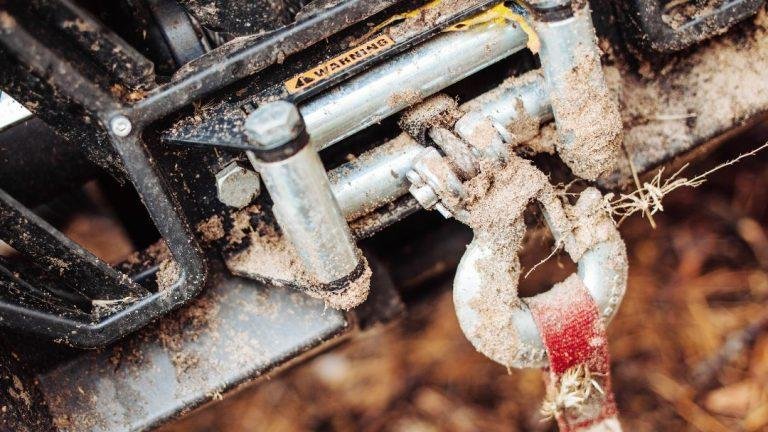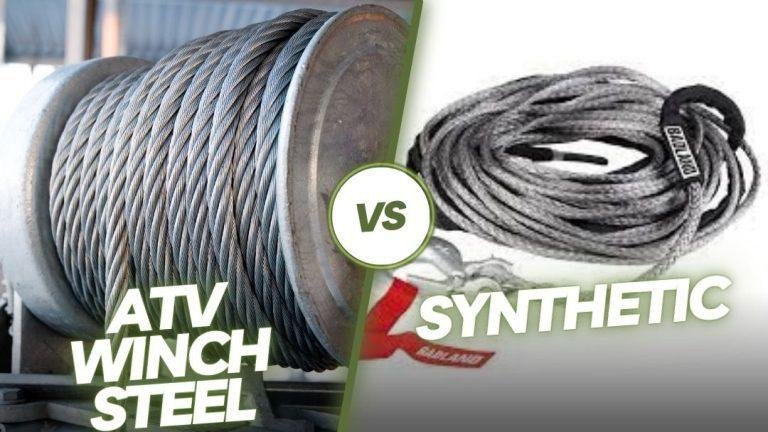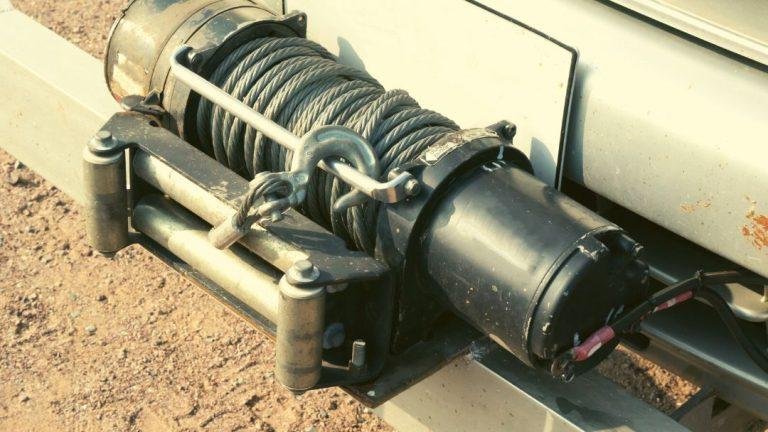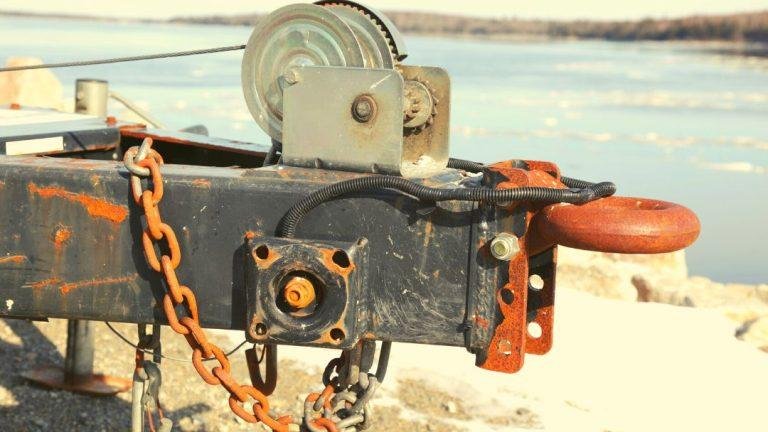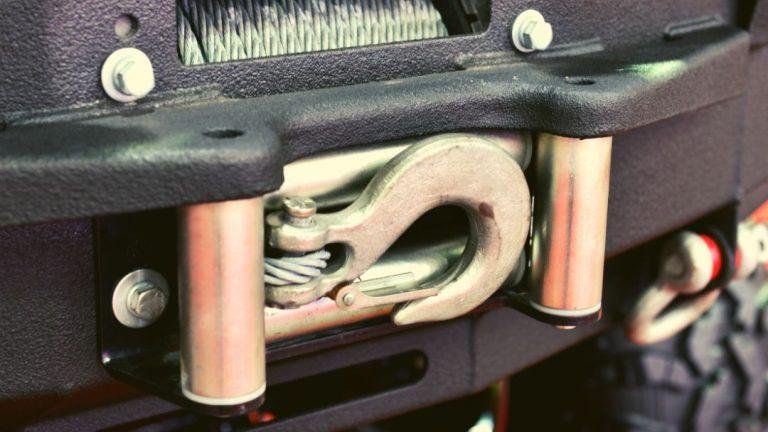To determine the proper size recovery strap you need, consider the weight of your vehicle and choose a strap with a working load limit (wll) that exceeds that weight. Additionally, factor in any extra weight from cargo or accessories.
Once you have determined the wll required, select a recovery strap that matches or exceeds that capacity. It is important to choose a strap that is strong enough to handle the weight of your vehicle for safe and effective recoveries.
Intro: when choosing a recovery strap, it is crucial to select the right size to ensure optimal performance and safety during vehicle recoveries. Using a recovery strap with a working load limit (wll) that exceeds the weight of your vehicle is essential. We will guide you on determining the appropriate size of recovery strap needed, taking into account factors like vehicle weight, cargo, and accessories. By following these guidelines, you can make an informed decision and ensure a successful recovery without compromising the safety of yourself or your vehicle.
Understanding The Importance Of The Right Recovery Strap
Choosing the right size recovery strap is crucial for efficient vehicle recovery. It ensures proper strength and maneuverability for different towing needs, reducing the risk of damage and accidents.
When it comes to recovering a stuck vehicle, having the right recovery strap is crucial. It is essential to understand the different types of recovery straps available and factors to consider before making a purchase. In this section, we will discuss the types of recovery straps, their differences in strength and durability, and the factors to consider when selecting the right recovery strap for your needs.
Types Of Recovery Straps:
- Nylon recovery straps:
- Nylon straps are popular due to their durability and elasticity.
- They are capable of stretching up to 20% of their original length, making them ideal for heavier vehicles.
- Nylon recovery straps are resistant to uv damage and are less likely to be affected by water exposure.
- These straps are a reliable choice for off-road recoveries and towing situations.
- Polyester recovery straps:
- Polyester straps are known for their high strength and abrasion resistance.
- They have a lower stretch capacity compared to nylon straps, making them suitable for lighter vehicles.
- Polyester recovery straps are less likely to absorb water, which improves their longevity.
- These straps are often used for recovery operations that require extra strength and less elongation.
Difference In Strength And Durability:
- Nylon recovery straps possess excellent elasticity, allowing them to handle sudden shocks and jerks during the recovery process effectively.
- Polyester recovery straps, on the other hand, offer superior strength and resistance to abrasion, making them a reliable choice for heavy-duty recoveries.
- Both types of straps are durable and capable of withstanding different climate conditions.
When choosing the right recovery strap, it is important to consider the following factors:
Gross Vehicle Weight Rating (Gvwr):
- The gvwr is the maximum weight recommended by the vehicle manufacturer for safe operation.
- It is crucial to select a recovery strap with a breaking strength higher than the gvwr of the vehicle needing recovery.
- Overlooking this factor can compromise safety and potentially damage both vehicles involved in the recovery.
Maximum Breaking Strength:
- The maximum breaking strength refers to the force that a recovery strap can withstand before it fails.
- It is essential to choose a recovery strap with a breaking strength suitable for the weight and size of the vehicles involved.
- Exceeding the strap’s maximum breaking strength can lead to dangerous situations and equipment failure.
Safety Factor:
- The safety factor indicates the level of reliability and margin of safety for a recovery strap.
- It is recommended to choose a recovery strap with a higher safety factor to ensure its durability and performance.
- A safety factor of 2: 1 is often recommended, which means the recovery strap can withstand twice the intended load.
By understanding the different types of recovery straps, their strengths and durability, as well as considering factors like gvwr, maximum breaking strength, and safety factor, you can ensure that you select the right recovery strap for your specific needs. Whether you opt for a nylon or polyester strap, make sure to choose one that can handle the demands of your recovery operations safely and effectively.
Calculating The Correct Length And Width
Calculating the correct length and width of a recovery strap is crucial when determining the right size needed for the job. Consider the weight of the vehicle being recovered and the conditions in which it will be used to ensure a safe and effective recovery process.
Determining The Required Length
Determining the correct length for your recovery strap is crucial to ensure effective and safe vehicle recovery. Consider the following factors when calculating the required length:
- Terrain conditions: The type of terrain you will be traversing plays a significant role in determining the length of your recovery strap. For off-road conditions with steep inclines or obstacles, a longer strap may be necessary to provide enough distance between vehicles during the recovery process.
- Distance between vehicles: To prevent collisions or damage during the recovery process, it is essential to have an adequate distance between vehicles. Measure the distance from the front of your vehicle to the rear of the vehicle you will be connecting to. Add a safety margin to this measurement to determine the minimum length of the recovery strap you need.
- Anchor points availability: Consider the location and availability of anchor points on both vehicles. Ensure that the recovery strap you choose is long enough to reach the anchor points comfortably without putting excessive strain on the strap.
Choosing The Appropriate Width
The width of the recovery strap is equally important as the length when it comes to safety and functionality. Here’s how to choose the appropriate width based on different vehicles:
- Lightweight vehicles: For small cars or lightweight vehicles, a recovery strap with a width of 2 inches (5 cm) is generally sufficient. This width provides enough strength and durability without being overly bulky or heavy.
- Mid-size vehicles: For mid-size vehicles such as suvs or pickup trucks, a recovery strap with a width of 3 inches (7.5 cm) is recommended. The extra width helps distribute the load evenly and provides added strength during the recovery process.
- Heavy-duty vehicles: When dealing with heavy-duty vehicles like large trucks or off-road vehicles, a recovery strap with a width of 4 inches (10 cm) or more is preferable. This wider strap can handle higher loads and offers increased stability and control during the recovery operation.
Remember, the width of the recovery strap should correspond to the weight and size of the vehicles involved to ensure optimal performance and safety. Take the time to carefully assess the specific requirements of your recovery needs before selecting the appropriate length and width for your recovery strap.
Ensuring Safe And Effective Vehicle Recovery
Choosing the right size recovery strap is crucial for safe and effective vehicle recovery. Understanding the weight and size of your vehicle is essential to determine the appropriate size of the recovery strap to prevent accidents and ensure successful recoveries.
Ensuring Proper Attachment And Tension:
- When using a recovery strap, it is crucial to ensure proper attachment and tension to ensure safe and effective vehicle recovery.
- Always attach the recovery strap securely to both vehicles, making sure it is tightly fastened.
- Use a suitable connection point such as a tow hook or recovery point on both vehicles.
- Avoid using weak or inappropriate connection points, as they may fail during the recovery process.
- Once attached, apply the correct tension to provide the necessary force for vehicle recovery.
Using Appropriate Connection Points:
- Choose appropriate connection points on both vehicles to ensure a secure attachment of the recovery strap.
- Tow hooks, recovery points, or properly reinforced frame sections are ideal connection points.
- Avoid connecting the recovery strap to weak or vulnerable parts of the vehicle, such as bumpers or axles, as they may not withstand the force of recovery.
Applying The Correct Tension:
- Ensure the recovery strap is correctly tensioned to provide the necessary force for vehicle recovery.
- Too much tension can lead to excessive strain on the recovery points, potentially causing damage.
- Insufficient tension may not provide enough force to recover the stuck vehicle properly.
- Gradually increase the tension on the recovery strap to prevent sudden jolts or jerky movements.
Avoiding Sharp Or Abrasive Edges:
- Before connecting the recovery strap, carefully inspect the surrounding area for any sharp or abrasive edges.
- Sharp edges can damage the recovery strap or cause it to fray, decreasing its effectiveness.
- If any sharp or abrasive edges are present, use appropriate protective measures such as a recovery damper or blanket.
Understanding The Limitations Of Recovery Straps:
- It is essential to be aware of the limitations of recovery straps to ensure safe and effective use.
- Recovery straps are designed for vehicle recovery and should not be used for lifting or towing heavy loads.
- Always follow the manufacturer’s guidelines and adhere to the maximum load capacity of the recovery strap.
Maximum Load Capacity:
- Every recovery strap has a maximum load capacity specified by the manufacturer.
- It is crucial to know and comply with this capacity to prevent the strap from breaking under excessive load.
- Exceeding the maximum load capacity can result in equipment failure and potential injury.
Avoiding Sudden Or Jerky Movements:
- During the recovery process, avoid sudden or jerky movements that can put unnecessary strain on the recovery strap and its connection points.
- Gradual application of traction provides a more controlled and safe recovery.
Being Aware Of Potential Hazards:
- Always be aware of potential hazards during the recovery process.
- Take precautions to ensure the safety of everyone involved, including bystanders.
- Communicate effectively with all participants and follow appropriate safety protocols.
Using The Recovery Strap Properly:
- When using a recovery strap, follow these step-by-step guidelines for safe and effective vehicle recovery.
Step-By-Step Guide For Safe Recovery:
- Clear debris and obstructions:
- Remove any debris or obstructions from around the stuck vehicle to ensure a clear and safe recovery area.
- This includes loose rocks, branches, or any other obstacles that may hinder the recovery process.
- Positioning the vehicles:
- Position both vehicles in a way that allows for a straight and controlled recovery.
- Ensure there is enough space between the vehicles to prevent collision during the recovery process.
- Attaching the recovery strap correctly:
- Attach the recovery strap securely to the designated recovery points on both vehicles.
- Make sure the attachment is tight and properly aligned with the recovery points.
- Gradually applying traction:
- With both vehicles in neutral gear, the driver of the towing vehicle should slowly apply traction.
- Gradually increase the tension on the recovery strap to provide a steady and controlled recovery.
- Avoid sudden or jerky movements to prevent equipment failure and ensure safety.
Maintenance And Care Tips For Recovery Straps:
- To ensure the longevity and effectiveness of your recovery straps, follow these maintenance and care tips.
Cleaning And Storing Properly:
- After each use, clean the recovery strap thoroughly to remove any dirt, mud, or other debris.
- Allow the strap to dry completely before storing it in a clean and dry location.
- Store the recovery strap away from direct sunlight and extreme temperatures to prevent degradation.
Inspecting For Wear And Tear:
- Regularly inspect your recovery strap for any signs of wear and tear.
- Check for fraying, cuts, or abrasions that may compromise its strength and durability.
- If any damage is detected, promptly replace the recovery strap with a new one.
Replacing Damaged Or Worn-Out Straps:
- If your recovery strap shows significant signs of wear and tear or has been damaged, it is essential to replace it immediately.
- Using a damaged or worn-out strap can lead to equipment failure and potential injury.
- Always prioritize safety by using well-maintained and structurally sound recovery straps.
Remember, adhering to proper attachment and tension, using appropriate connection points, applying the correct tension, avoiding sharp or abrasive edges, understanding the limitations of recovery straps, and following a step-by-step guide are crucial for safe and effective vehicle recovery. Regular maintenance and care of recovery straps also ensure their longevity and reliability.
By implementing these practices, you can confidently handle vehicle recovery situations while prioritizing safety.
Frequently Asked Questions On What Size Recovery Strap Do I Need
What Length Recovery Strap Do I Need?
To determine the length of the recovery strap you need, consider the weight of your vehicle. For cars and small suvs, a 10-15 feet strap is sufficient. For larger suvs and trucks, opt for a 20-30 feet strap. For heavy-duty vehicles, such as commercial trucks or farm equipment, you may require a 30-50 feet strap.
Keep in mind that it’s better to have a longer strap than a shorter one, as it allows for more flexibility during the recovery process.
What Weight Rating For Recovery Strap?
For recovery straps, the weight rating is crucial. A higher weight rating ensures the strap can handle heavier loads during towing or recovery operations. It is advisable to choose a recovery strap with a weight rating that matches or exceeds the weight of the vehicle or object being recovered.
This ensures the safety and effectiveness of the recovery process. Using a recovery strap with a lower weight rating can result in damage to the strap, vehicle, or both. Therefore, knowing the weight rating of the recovery strap is essential for a successful recovery operation.
Is A Tow Strap The Same As A Recovery Strap?
A tow strap is not the same as a recovery strap. Tow straps are designed for lighter tasks like towing a disabled vehicle short distances. They usually have hooks on both ends for easy attachment. On the other hand, recovery straps are used for heavy-duty tasks, like pulling a stuck vehicle out of mud or sand.
They are made of durable materials and have loops at the ends for secure attachment. Recovery straps have some stretch to provide a kinetic recovery, which helps to avoid sudden jerks. Using a tow strap for recovery purposes can be dangerous as it may not have the necessary strength or stretchiness.
It is essential to use the right type of strap for the specific task to ensure safety and effectiveness.
What Is The Best Length For A Kinetic Recovery Rope?
The best length for a kinetic recovery rope depends on the weight of your vehicle. Typically, a 3/4-inch diameter rope is suitable for light-duty vehicles weighing up to 5,000 pounds. For mid-size vehicles weighing between 5,000 and 10,000 pounds, a 7/8-inch diameter rope is recommended.
Heavier vehicles, such as trucks and suvs, should use a 1-inch diameter rope. It’s important to choose a rope that can handle the weight of your vehicle to ensure effective and safe recovery. Remember to follow the manufacturer’s guidelines for your specific rope model and consider factors like the maximum working load and breaking strength.
With the right length and diameter, a kinetic recovery rope can be a valuable tool for off-road enthusiasts and those who frequently encounter difficult terrain.
Conclusion
To determine the proper size recovery strap you need, it is essential to consider the weight of your vehicle and the conditions in which you plan to use it. A recovery strap that is too small may not be able to handle the weight of your vehicle, while a strap that is too large may not provide the necessary support.
By understanding the weight rating and breaking strength of different recovery straps, you can select the right size for your needs. Remember to choose a strap that has a weight rating greater than the weight of your vehicle, and consider the terrain and potential load factors when making your decision.
Investing in the correct size recovery strap will ensure that you are equipped for any recovery situation that may arise, providing peace of mind and safety on your off-roading adventures. So, choose wisely and stay prepared!

